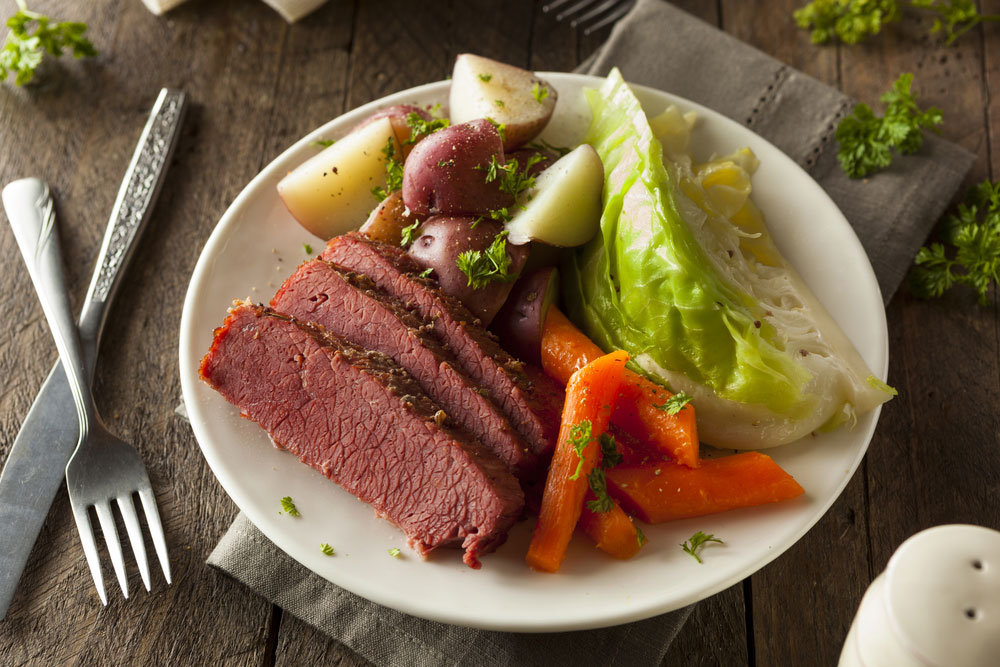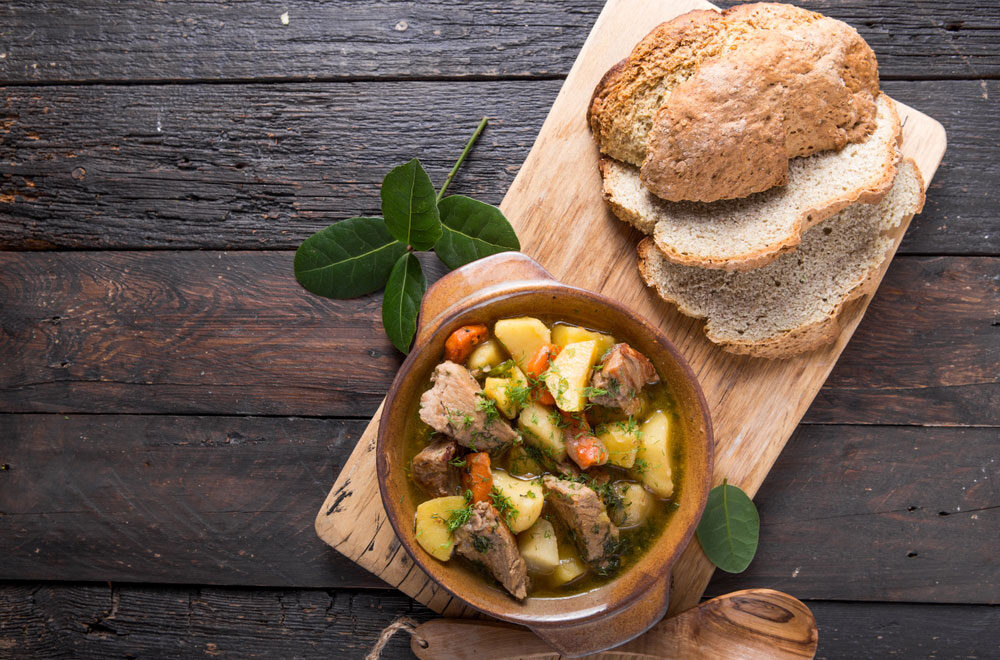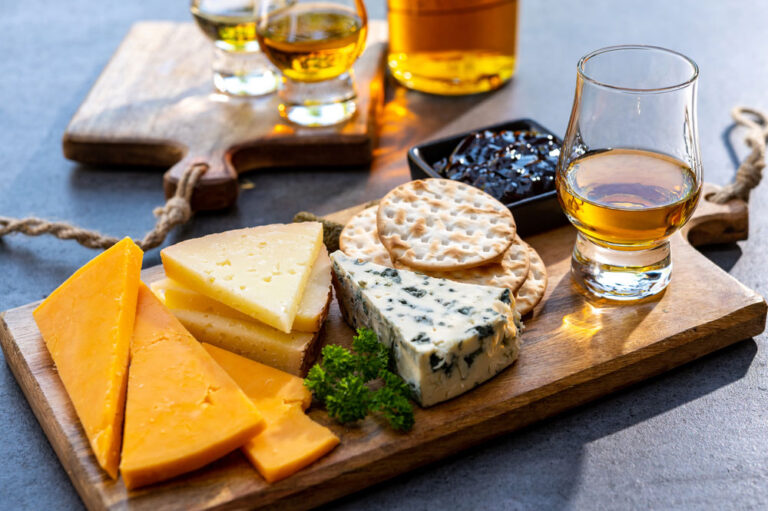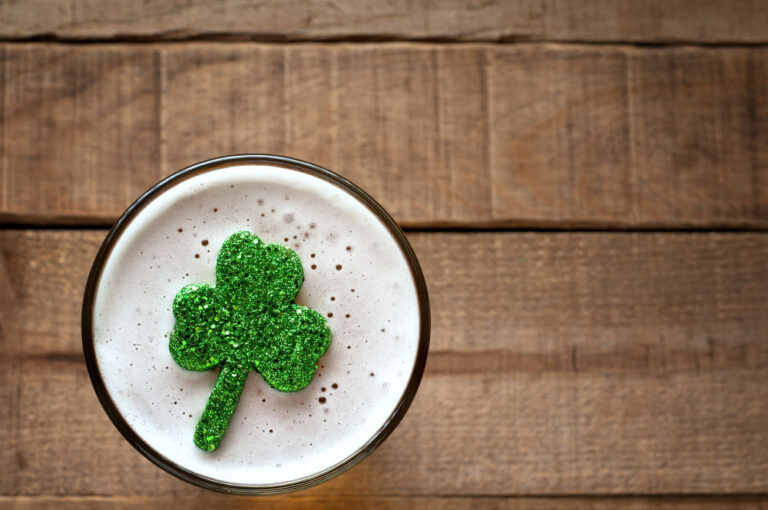The Potato Famine Myth and the Truth About Irish Potatoes
When you think of Irish cuisine, what’s the first thing that comes to mind? For many, it’s the humble potato, deeply rooted in Irish culture and history. However, Irish food is surrounded by numerous myths and misconceptions, so now we aim to separate fact from fiction, starting with the legendary tale of the potato famine and the truth about Irish potatoes.
Myth 1: The Potato Famine Was Solely Responsible for the Irish Potato’s Reputation
One of the most persistent fallacies regarding Irish food is that the potato famine (Great Famine) in the mid-nineteenth century was solely responsible for the potato’s relationship with Ireland. While the famine had a devastating impact, it’s crucial to remember that the Irish had been cultivating and eating potatoes for generations prior to this awful tragedy.
The Real Story of Irish Potatoes
Potatoes are not exclusive to Ireland, but their role in shaping Irish cuisine is undeniable. In the early 17th century, potatoes were introduced to Ireland, likely from the Spanish colonies in the New World. Initially, they were regarded with suspicion and even fear. Still, they soon proved to be a hardy and reliable crop, capable of sustaining a growing population.
Potatoes had been a staple diet for the Irish by the 18th century, particularly for those in lower socioeconomic levels. Because of their great yield and nutritional value, they were critical to survival. The potato’s popularity grew until the introduction of potato blight (Phytophthora infestans) in the mid-nineteenth century, which caused a severe famine.
Myth 2: Irish cuisine is one-dimensional and based on potatoes.
Another popular misconception is that Irish cuisine is one-dimensional, centered on potatoes, and lacking in variety. While potatoes were an important part of the Irish diet, they were only one component of a larger gastronomic landscape.
The Reality of Irish Cuisine
Ireland’s gastronomic culture is anything but one-dimensional. It has a rich and diverse culinary legacy that has changed over time. The geography, climate, and inventiveness of the Irish people all had an impact on Irish cuisine. It uses a broad variety of ingredients, such as fresh seafood from its plentiful coasts, high-quality meats, and a variety of vegetables.
Modern Irish cooking celebrates the country’s diverse and flavorful offerings, often with a contemporary twist. It has earned a place on the global culinary stage, with innovative chefs and food producers continually pushing boundaries and embracing traditional Irish ingredients.
Debunking Myths, Exploring Realities
We begin to see a more nuanced and diverse picture of Ireland’s culinary culture as we dispel these myths and uncover the reality about Irish potatoes and cuisine. Let us now continue to investigate and debunk various aspects of Irish cuisine, such as the infamous “corned beef and cabbage” meal and the delicious complexity of Irish stews.
The Corned Beef and Cabbage Conundrum
In our ongoing effort to dispel stereotypes about Irish food, we’ve come across one of the most misunderstood and misrepresented dishes: corned beef and cabbage. This dish has become an Irish-American tradition, often linked with St. Patrick’s Day. However, its historical origins and relationship to traditional Irish cuisine are more complicated than many people know.
Myth No. 1: Corned Beef and Cabbage Is a Traditional Irish Dish
A common misconception is that corned beef and cabbage is a genuine Irish cuisine that has been relished by the Irish for generations. The truth, however, is considerably different.
The Truth About Corned Beef and Cabbage
Beef was a luxury that most Irish people couldn’t afford throughout the 18th and 19th centuries. The majority of Irish people, particularly those living in rural regions, ate mostly dairy products, grains, and vegetables, notably cabbage. In historic Irish diets, pork, particularly bacon, was a more common and affordable meat.
Beef, particularly the corned beef that many identify with Ireland, was produced primarily for export rather than domestic consumption. Ireland was a part of the British Empire at the time, and its beef industry serviced to the British market.
Myth 2: Corned Beef and Cabbage Is Served Regularly in Ireland
Many people wrongly believe that corned beef and cabbage is a common and popular dish in Ireland. However, in modern Ireland, this dish is rarely encountered on restaurant menus or in homes.
The Reality of Corned Beef and Cabbage
While the dish has historical roots, it’s not a mainstream part of modern Irish cuisine. Instead, Irish people are more likely to enjoy other meat and vegetable combinations, such as traditional stews with lamb or beef, and dishes featuring seafood, which is widely available along Ireland’s extensive coastline.
Myth 3: Corned Beef and Cabbage Is the Main Irish Dish for St. Patrick’s Day
Another myth about corned beef and cabbage is that it is the traditional Irish dinner for commemorating St. Patrick’s Day. The truth is that St. Patrick’s Day was originally a religious festival in Ireland, with church services and restrictions on meat and alcohol consumption. The Irish diaspora, notably Irish-Americans, embraced and popularized St. Patrick’s Day celebrations with parades, festivals, and a feast of corned beef and cabbage.
The Evolving Legacy of Corned Beef and Cabbage
The narrative of corned beef and cabbage exemplifies the cultural and gastronomic growth of the Irish diaspora, especially in the United States. It demonstrates the continuous links between Irish heritage and St. Patrick’s Day celebrations, as well as the adaptation and fusion of culinary traditions.

The Heartwarming Truth About Irish Stews
In our exploration of Irish food myths, we now venture into a territory where fact meets heartwarming tradition – Irish stews. These iconic dishes, celebrated for their hearty and comforting nature, often carry with them a historical and cultural significance that’s worth savoring.
Myth 1: Irish Stew Is a Single, Uniform Dish
One prevalent misconception regarding Irish stew is that it is a single, standardized dish. In actuality, Irish stew is an idea more than a recipe, and it varies greatly from region to region and even from family to family.
The Reality of Irish Stew
Irish stew is often made with meat (usually lamb), potatoes, onions, carrots, and occasionally turnips. Slow cooking allows the flavors to blend and create a rich, comfortable supper. However, the possibilities are endless—some may add pearl barley, others a dash of Guinness for depth of taste, and a few may even insist on a specific potato variety. There is no such thing as a “true” Irish stew because it varies according to the cook’s preferences and regional influences.
Myth No. 2: Irish Stew Is Only Made on Special Occasions
Some people believe that Irish stew is only eaten on special occasions or during holidays. While it is unquestionably a favorite at holiday gatherings, it is also a staple of regular Irish cooking.
The Role of Irish Stew in Daily Life
Traditional Irish stew was a practical dish, born out of necessity. It made use of readily available ingredients like tough cuts of meat and root vegetables, and its slow-cooking nature made it perfect for tending to other chores while it simmered away. Today, Irish stew remains a beloved comfort food, fit for any day.
Myth 3: Irish Stew Is an Old, Outdated Dish
Another common myth is that Irish stew is an ancient, outmoded meal that has lost its popularity in modern times. Irish stew, on the other hand, has had a renaissance, finding a place in both traditional and modern Irish cuisine.
The Revival of Irish Stew
Irish chefs and home cooks have embraced Irish stew’s rich legacy. Many people have recreated it, generating novel versions while maintaining its essential simplicity. These reinterpretations frequently feature the finest local ingredients and provide a delectable spin on an Irish classic.
Finally, Irish food, like its culture, is complicated, diverse, and ever-changing. Dispelling myths about meals such as corned beef and cabbage and Irish stew exposes a complex and intriguing culinary history.
The Enduring Charm of Irish Soda Bread
In our culinary journey through the myths and realities of Irish food, we find ourselves enchanted by the distinct charm of Irish soda bread. Often romanticized and occasionally misunderstood, this staple of Irish baking has a story that’s as rich as its flavor.
Myth 1: Irish Soda Bread Is Sweet
One prevalent misconception regarding Irish soda bread is that it is sweet and dessert-like. While there are sweet versions, traditional Irish soda bread is not sweet.
The Reality of Irish Soda Bread
Traditional Irish soda bread, often known as “plain soda bread,” is a simple, rustic bread made with only four basic ingredients: flour, baking soda, salt, and buttermilk. There is no sugar added, resulting in a hearty, somewhat acidic bread that pairs well with soups, stews, and cheeses.
Myth 2: Irish Soda Bread Contains Raisins and Caraway Seeds
Another common misconception is that all Irish soda bread contains raisins and caraway seeds. While variants with these components are popular, they do not represent the traditional soda bread.
The Reality of Irish Soda Bread Variations
Irish soda bread comes in a range of flavors, including sweet and cake-like varieties with raisins or currants. This is referred to as “spotted dog.” However, the basic, everyday soda bread, which is most identified with Irish cuisine, is devoid of these additives.
Myth 3: Irish Soda Bread Is an Ancient Recipe
Some legends portray Irish soda bread as a centuries-old recipe passed down through generations. While it is an important element of Irish culinary history, it is not as old as some claim.
The True Origins of Irish Soda Bread
Baking soda was first used as a leavening ingredient in bread in the nineteenth century, when bicarbonate of soda became readily available. In Irish families, it was a quick and inexpensive way to make bread. As a result, traditional soda bread is a comparatively new contribution to Irish cuisine.
To summarize
As we debunk the myths surrounding Irish cuisine, we discover that reality is frequently just as enthralling as fiction. The cuisine of Ireland tell a story of persistence, resourcefulness, and a profound connection to the land, from robust Irish stews to the timeless simplicity of soda bread. We can understand the actual essence of Irish food and the culture it represents by delving into these myths.



